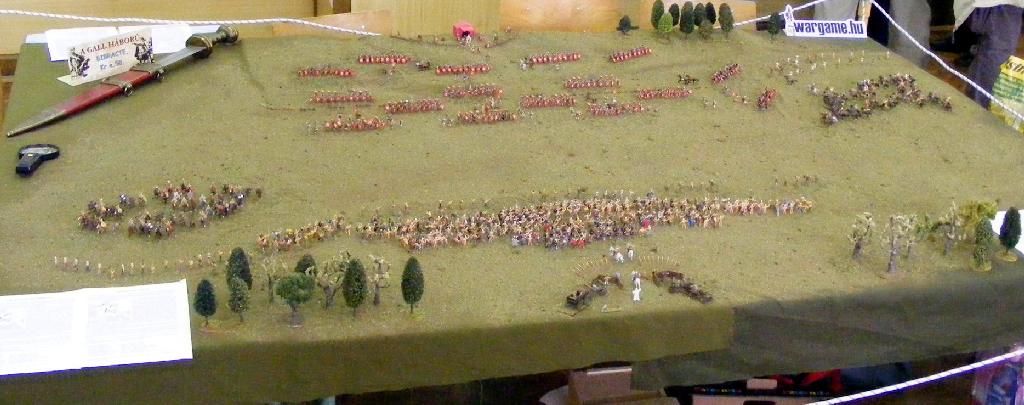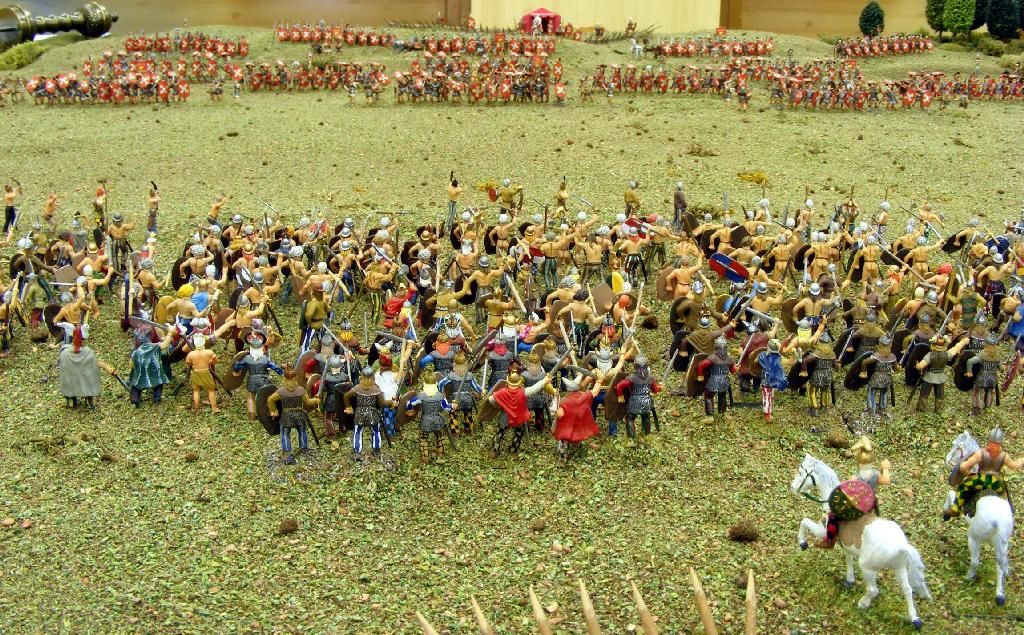1/72 Battle of Bibracte 58 B.C. Part 1
Dated: April 21, 2010.
From:
Krisztian Takacs
Hungary
THE BATTLE OF BIBRACTE
After the Sullaian dictatorship appeared the Roman general and statesman Julius Caesar. His first serious commission was to lead the Gaul Province by which he hoped to serve the growth of the empire. He succeeded to intervene in the inner matters of the Gall tribes outside the province too, and when he was called by one wing of the Heedussian leaders to help them stop the Helvetian migration, he marched in Gaul territory with six legions.
He scored his first victory at the River Seine. When crossing the river he was attacked by 3 legions of the Helvetian army. The remaining units were massacred. To strengthen the alliance with the Heedussian tribes and to hold the other Gaul tribes in check, Caesar decided to fight a conclusive battle against the Helvetians near Bibracte in 58 B.C. He succeeded to seize a height, where he deployed his novice legions (LEGIO XI, XII) behind four of his veteran legions (LEGIO VII, VIII, IX, X), and he had a bund dyke made just in front of the Triarii line (these are the Romans dressed in white tunics on the diorama). The Cohorses of the Roman Army lined-up like the chess fields with spaces among them (our diorama shows the composition of a whole legion). The cavalry of the Romans were composed of Gaul allied troops. The Helvetians built a compact phalanx in front of their encampments formed by carts. Typically of the Celtic (Gaul) tactics, they drew up in battle array in one very deep, dense front-lined band (warband). They focused their cavalry at their right wing like the Romans. The number of the Helvetian Army was the multiple of the Roman Army, according to some sources it consisted of more than 90.000 warriors. Julius Ceasar's army and its auxiliary troops consisted of about 30.000 soldiers.
The battle began with cavalry attacks. The Romans and also the Helvetians succeeded to disperse the harassing enemy cavalry, meanwhile the infantry drew up for the assault. Our diorama shows this moment.
The infantry battle developing after the assault was a draw, but slowly the Romans surmounted, and pushed back the enemy. The Boius tribe of 15.000 warriors that were in alliance with the Helvetians, marched out of the camp, and Ceasar set the Triarii against them. After many hours' fight the Helvetians retreated. The Romans besieged the camp and destroyed the enemy. Ceasar's Army scores a total victory.
After the victory won over the Helvetians, Ceasar stayed in Gaul territory and aimed at extending the influence of Rome in the region. The battle is arranged with 1.134 pieces of HaT and figures from other manufacturers 1/72 sized plastic, and own sculpted and moulded metal figures.







The diorama was made by:
Gábor Iványi (HUN) (figure painting, 390 pcs)
Gábor Lovas (HUN) (figure painting, 40 pcs)
Zsolt Schäfer (HUN) (home made figures, 24 pcs)
Krisztián Takács (HUN) (planning, figure painting, 650 pcs)
Jr. Károly Takaró (HUN) (figure painting, 30 pcs)
Sándor Takács (HUN) (home made base plates, weapons)
You can find more information and photos of armies and figures on our website www.wargame.hu
Many thanks to Mr. Krisztian Takacs.